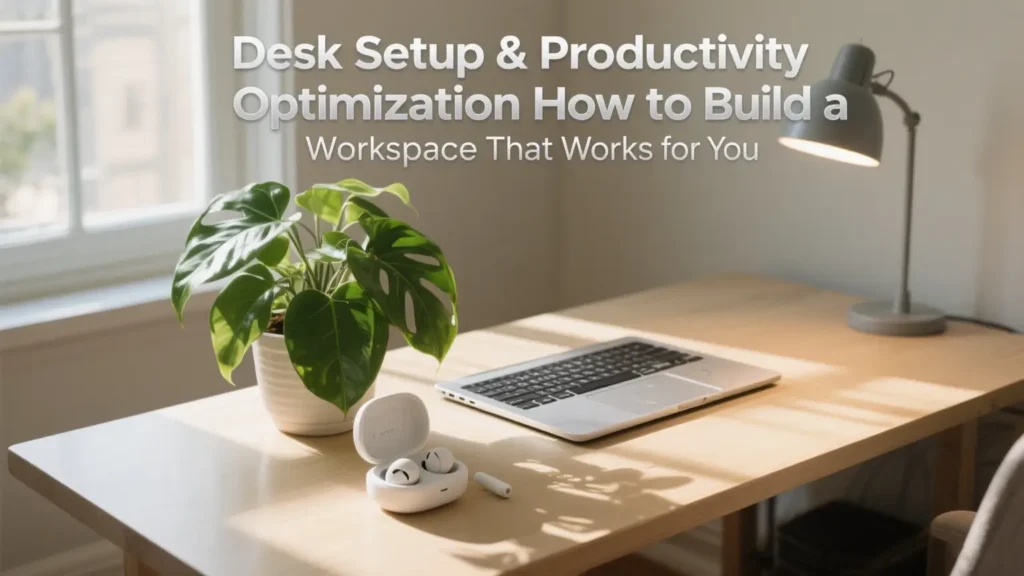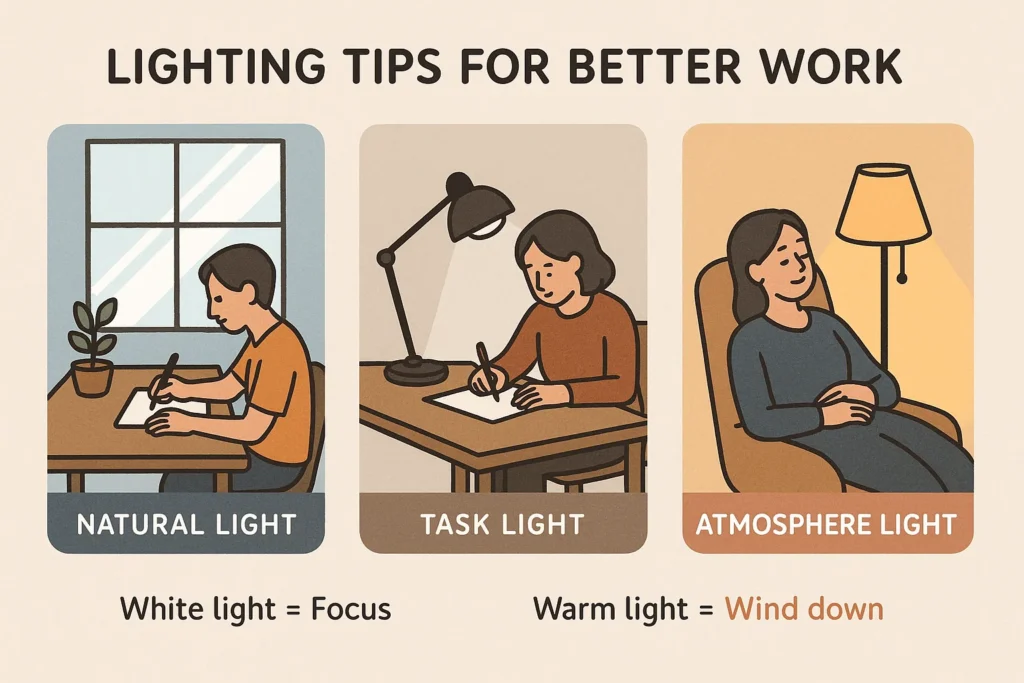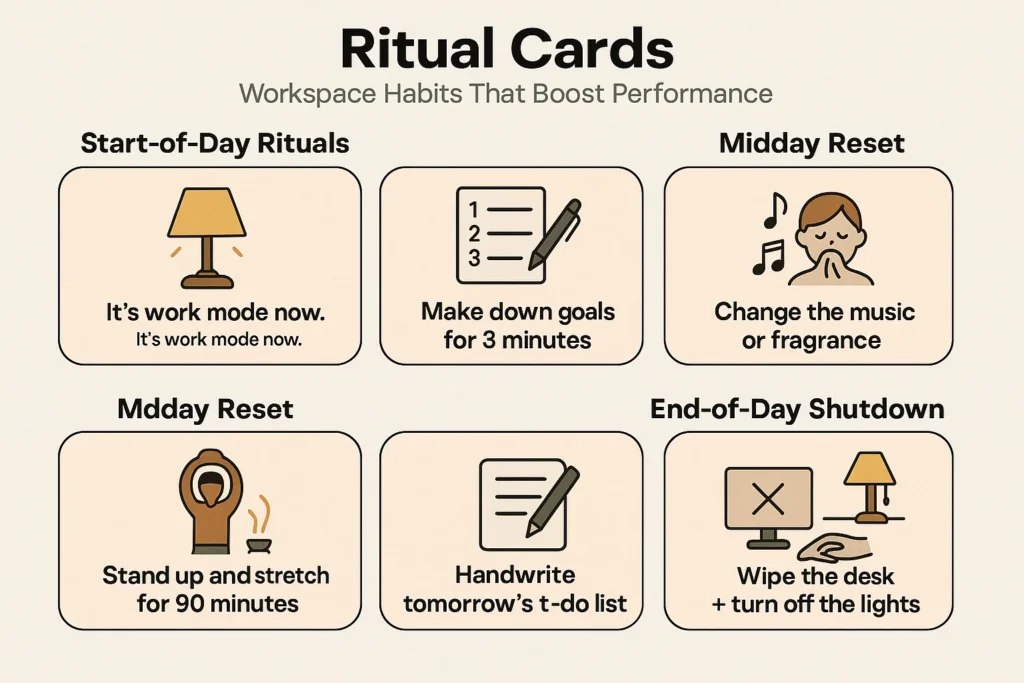Your desk in the world of remote and hybrid work is no longer just a piece of furniture. It is the place that you give out orders, it is also your art studio and sometimes it is your café. If you are freelancing, working remotely, or even working on a side project, understand this – your desk and all the surrounding things are where the magic comes from most of the time, except your mental energy, of course. It can be quite surprising that amidst all that, people take for granted how much the environment can alter one’s state of mind and work productivity.
So, let us delve deeper into the science of it all and strategize, one of the most considerable points being the involvement of practical tips that will help you be a master of productivity through a smarter desk setup.

Why Your Desk Setup Affects Your Productivity More Than You Think
When we talk about productivity, we usually mean those aspects related to self-discipline and time management. Nevertheless, and environmental psychology findings have unveiled that moving away from or getting closer to the optimum can be done by the workstation as well.
Several research projects have confirmed that untidiness is one of the things directly responsible for raising anxieties and disturbing the working memory responsible for the down. On the contrary, a tidy and well-organized setting of the workspace is a direct means of unlocking our mind’s potential in processing information while at the same time boosting concentration. Of course, not only physical parameters—like lighting, noise, and colors—are those that have a measurable impact on the ability to keep engaged but also they are among the key influencers of productivity.
The story of the office or the co-worker’s home that we saw on video call is past, the metaphor of the aircraft cockpit is more accurate to describe the professional habitat today. Concentration is not measurable in the number of aesthetic items but it represents also the achievement of the highest requirements of one’s capabilities in different abiotic ecosystems for work.
The Ultimate Desk Setup Checklist: From Ergonomics to Aesthetics
1. Prioritize Ergonomics First
The core of any productive desk setup is comfort. Ergonomic design not only eliminates fatigue but also decreases the chance of any strain injuries and helps you keep focused for a longer time. Here’s what you should look at:
Chair: To pick a proper chair, you should look for one that does not make you slip back, that makes it possible for you to place your feet flat on the floor, and, which at the same time allows your knees to bend at almost 90 degrees.
- Desk Height: The table at the correct height should have your elbows at a right angle when typing.
- Monitor Position: Your eyes and the top of the monitor should be in line with or just below it. Also, keep the screen 20 inches (50 cm) away from your face.
- Keyboard & Mouse: If you experience fatigue in your wrists, get a wrist rest. Keep them at an equal level.
Even minor changes can lead to significant improvement in terms of productivity along with time.
2. Minimize Desk Clutter
A simple, uncluttered look is not only trendy; it also serves a purpose. Too many small things on the desktop makes it cluttered and hence cause distractions.
- Use cable organizers and under-desk trays
- Limit items on your desktop to 3–5 essentials
- Use vertical space for storage (e.g., monitor risers with drawers, pegboards)
- Digitalization of files and notes to fight clutter
A tidy desk can get you to focus and decrease procrastination as it puts your brain into task mode.
3. Use Lighting Strategically
The positioning of lights is an ignored factor in workstation arrangement but it has a direct impact on eye strain and emotions.
- What Is the Level of your Monitor? (How close to the eye the top of the screen is)
- Appropriate lighting levels are key to reducing eye strain and viewing problems resulting from poor lighting, position your monitor properly, and reduce the glare.
- Remember to turn your screen brightness down to avoid eye fatigue.
Proper illumination not only prevents eye strain but also improves the quality of your work.
Natural Light: Place your workstation in close proximity to a window if it is an option. It is more effective to bring natural daylight into your office as it helps in activating the body.
- Task Lighting: Use a desk lamp with dimmable lighting and different color temperatures to your advantage.
- Avoid Harsh Overhead Lights: Utilize indirect warm light for a relaxing atmosphere.
White light similar to daylight promotes the concentration of a person in daytime whereas a yellow light as the evening sets in, aids in relaxation.
4. Add Personal & Motivational Elements
A workplace is not just a cubicule. A positive environment is created by visual markers, which in turn produces creative ideas and boost the morale of employees.
- Create a vision board or goal tracker
- Add a small plant or natural element for stress reduction
- Hang a framed photo or inspirational quote
However, do not go too far with your arrangements; too much decoration can create chaos in your head and be counterproductive.

Tech & Tools That Boost Productivity
Current productivity enhancement methods do not just stop at purchasing a better desk table. The reliance on digital technology can greatly enhance work and organization of daily tasks.
1. Task Management Apps
- Use Trello and Asana apps for project management
- Create a Notion workspace for all-in-one
- For simple task lists, Todoist comes as a great tool
2. Focus Enhancement Tools
- Appropriate examples include Pomodoro Timers and Focus Keeper
- Put on noise isolation earphones that can help block the unwanted sound and also act as a form of barrier between you and the world
- If you are the type of person who enjoys surrounding sounds, you can always find a good match of sounds that brings you higher concentration from Noisli or Brain.fm
3. Time Tracking & Analytics
- RescueTime for monitoring the use of electronic devices
- Toggl for keeping track of freelance time logs
- Clockify for induction of the client and real-time management
Your tech stack is very important for the conservation of mental strength and efficient problem solving.
Creating Rituals and Boundaries Around Your Workspace
Having a productive desk setup doesn’t only stop at the physical space. Your habits around the space also matter.
1. Start-of-Day Rituals
- Light a candle or turn on a lamp to signal “work mode”
- Do a 3-minute desk tidy before starting
- Write out your top 3 priorities
2. Midday Recalibration
- Stand up every 90 minutes
- Do a quick breathing exercise or stretch
- Change the lighting or background music to an energy reset
3. End-of-Day Shutdown
- Sign out from work accounts
- Close all browser tabs
- Wipe your desk with a microfiber cloth
- Write down what’s pending for tomorrow
These rituals separate psychological domains, thus reducing the demand for stress and facilitating recovery.
Small Changes, Big Gains: Real Examples of Productivity Boosts
So, what might seem like trivial changes in desk setup led to notable work quality improvements for some individuals?
Case 1: The Night Owl Designer
After including warm LED desk lighting, and noise-canceling headphones, a freelancer reduced distractions and did client work 30% faster. The lighting reduced the strain on the eyes during the late hours.
Case 2: The Overwhelmed Manager
After a project manager removed the clutter from his desk and included a dual-monitor setup, there was an increase in his clarity during Zoom meetings and a much quicker email triage. By now, he is using well-organization of papers in vertical trays. His Monday starts with a 10-minute reset ritual.
Case 3: The Remote Worker with Kids
A work-at-home mom made a “quiet zone” with a privacy panel and set up a definite work habit and ritual for kids, a desk with a timer visible to the children which clarified when she was concentrated was also part of the setup.
These real-life strategies are practical evidence that improvement in productivity ensues when the unique, personal modifications are introduced.

Conclusion: Build Your Ideal Desk for Better Work & Well-Being
Productivity is not like a T-shirt one size fits all. Nevertheless, in your effort to curate a desk setup that has both the tools you need and a personal touch, you are paving the way for better concentration, lower stress, and higher output. The state of your workspace whether through ergonomic correctness, lighting, gadgets, or the resources you use and your daily rituals can make or break your performance.
Imagine your desk not just as a work spot but a place that contributes towards your good or bad mood and energy level. Starting with one small step today—whether it is coming up with a “personal sun” idea, incorporating a task lamp into your routine, or setting up a morning ritual—would help you to work more efficiently.
Final Tips for Productivity Optimization Through Desk Setup:
- Be consistent and flexible in your setup
- Check and renew your workspace every month
Your desk is not merely a decorative place. The desk is the very place from where you can start thinking and implementing the best ideas.